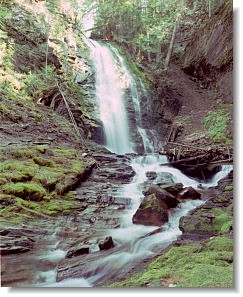3.7 Tree and vegetation species composition
Learner outcomes
On completion of part 3F, you will understand the role that the stand level component — tree and vegetation species composition — plays in forest biodiversity and you will be able to:
- Describe tree and vegetation species composition
- Describe the role of tree and vegetation species composition within forest biodiversity
- Identify forest management applications for tree and vegetation species composition
General information about tree and vegetation species composition
The maintenance of the diversity of naturally occurring plant species is key to the maintenance of biological diversity within landscape units. Where rare and endangered plant and animal species and habitats have been identified, these should be protected according to guidelines described in the Identified Wildlife Management Strategy (IWMS). Within cutblocks, there are actions that can help maintain diversity.
- What role does species composition play in forest biodiversity?
Applications to forest management
There are several applications.
- Landscape level
-
The variety of native understorey plants and plant communities should be maintained across the landscape unit.
See also Table 1-A Percentage area required as wildlife tree patches
- Stand level
- Vegetation management treatments can be designed to create variability among or within treatment areas — implement actions that promote desired species and minimize effects on non-target plants.
- A component of deciduous species, both immature and mature, should remain after harvesting, site preparation, vegetation management and spacing activities.
- Where mature hardwoods form a minor component of the stand (<20 %) greater emphasis should be placed on maintaining these either singly or in clumps
- Extensive conversion from climax to seral species (e.g., Douglas-fir to lodgepole pine), or seral to climax, should be avoided.
- Where suited to the site, stands should be regenerated with a mixture of tree species (natural and planted) rather than with a single species.
- Consider cluster planting to encourage spatial diversity.
- Maintain minor tree species such as yew, birch, alder, aspen, and cottonwood.
- Are there other applications to the landscape level that you can think of? If so, list them.
- Are there other applications to the stand level that you can think of? If so, list them.
Tree and vegetation species composition - conclusion
Review of learner outcomes
- Are you able to describe tree and vegetation species composition? Describe what is meant by tree and vegetation species composition in the maintenance of biological diversity within landscape units.
- Are you able to identify forest management applications for tree and vegetation species composition?
- Can you describe the role of tree and vegetation species composition in forest biodiversity?
If you cannot complete these questions, what will you do so that you are able to?
Transfer of learning
If you were at a family dinner and the discussion was about the need for forest biodiversity, what would you tell them about importance of tree and vegetation species as one stand level component?
Reflections
How am I now thinking about tree and vegetation species that is different from before?




